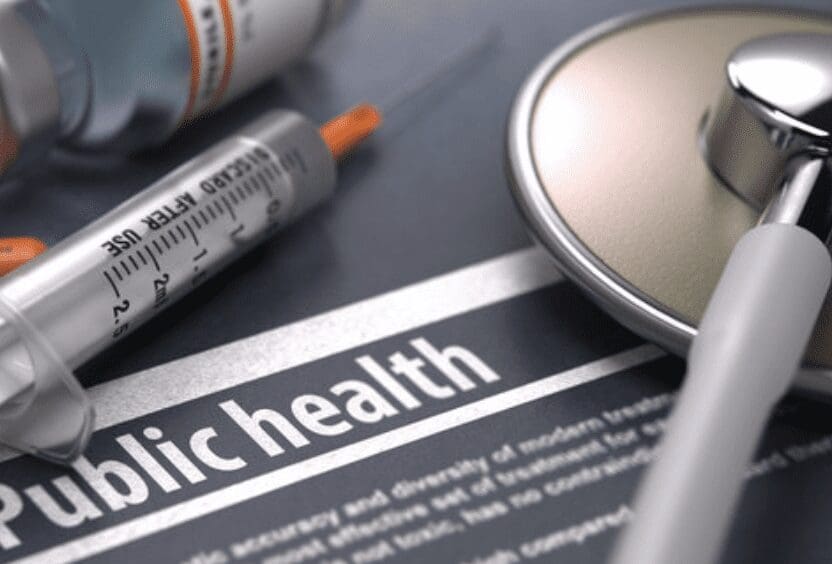

The Division of Public Health had its Joint Finance Committee hearing Tuesday. (Photo by tashatuvango/Adobe Stock)
Editor’s note: This report has been updated to reflect that Medicaid is not overseen by Public Health
The Delaware Division of Public Health wants a 2025 budget of $167.4 million, but about $3.5 million of that is not in the governor’s recommended budget.
That puzzled the chair of the state Joint Finance Committee, which writes the state budget. It’s in the middle of hearings about state budget requests and listened to Public Health’s appeal Tuesday.
Among the things not listed in Gov. John Carney’s $6.1 billion budget are a $230,000 allocation for the Delaware Public Health Laboratory support additional operating costs as a result of a new, bigger facility.
“These seem like really worthy items and some of them are some pretty big ticket items,” said Sen. Trey Paradee, D-Dover. “I’m a little exasperated because some of these seem really important.”
RELATED: Carney’s proposed $6.1 billion 2025 state budget up 9% from 2024
He said the state is trying to keep budget growth in check this year because of a leveling-off in state revenues.
It’s already on the hook for nearly $95 million in additional Medicaid costs, for the Medicaid program, overseen by the Division of Medicaid and Medical Assistance. Both Public Health and Medicaid are under the Delaware Department of Health and Social Services.
The biggest chunk of that is a $230,000 allocation for the Delaware Public Health Laboratory operating fund, to support additional operating costs as a result of the increased square-footage and workload of the new facility.
The 2025 budget goes into effect July 1.
Public Health isn’t the only division to seek money not allotted in Carney’s Fiscal Year 2025 Recommended Budget.
This includes:
- $359,600 for Marijuana Control Act annualization
- $598,000 for animal welfare funding
- $850,000 for My Healthy Community maintenance costs
- $767,700 for Delaware electronic reporting surveillance system maintenance
- $391,600 for health equity and the State Health Improvement Plan
- $138,000 for the Office of Emergency Medical Services
- $200,000 for public health preparedness funding
- $174,800 for the Delaware Public Health Laboratory instrument replacement
Josette Manning, secretary of the Delaware Department of Health and Human Services, acknowledged that the funding request coupled with additional Medicaid costs is a challenge.
“I think we share that sentiment that obviously a large part of our budget is consumed with Medicaid and Medicaid expenses,” she said. “However, obviously, it’s something that is critically important to the people of Delaware and we recognize that and we also recognize being fiscally responsible and not spending money that we don’t have to spend, and all of these requests are certainly prepared based on need and desire and priority.”
Steven Blessing, the director of the Division of Public Health, agreed.
“We’re going to be able to reallocate some, reprioritize some things to get where we need to be with some of these programs,” he said, “and then also federal money, grant money we’ll be able to bring in… and we have some remaining COVID funding that we’ll probably be able to move over to use.”
Sen. Stephanie Hansen, D-Middletown, applauded the division for prioritizing an air quality program for schools, specifically keeping school children safe during and in the aftermath of the pandemic.
School safety and lead remediation came up during the hearing.
Part of the division’s budget request is a one-time allocation of $2.5 million for residential lead remediation, and a one-time allocation of $1 million to support the childhood lead poisoning prevention program.
In the past two years, the state has conducted lead water testing in every school, passed legislation to combat lead paint in homes and more.
Lead remediation in Delaware
- Wilmington mails surveys to help identify lead water contamination
- State looks to rectify effects of lead paint with new bill
Rep. Kevin Hensley, R-Odessa, suggested the division not limit their request to a one-time allotment for lead remediation. There are so many lead-related problems across the state, he said.
Manning said if a child tests positive for lead exposure, the division refers to the child’s pediatrician but also tries to identify the residents and possible causes of exposure.
This often is in homes that predate 1978, when the federal government banned consumer uses of lead-based paint.
Terri Hodges and Matt Denn – chair and co-chair, respectively, of Action for Delaware’s Children – urged the General Assembly in a statment to dedicate additional one-time funds in the 2025 budget to assist property owners with the cost of remediating exposed lead-based paint.
“Hundreds of Delaware children every year are suffering from lead poisoning, which does serious damage to the brain and nervous system,” the statement read. “This is a preventable problem. The time has now come to fully invest in protecting Delaware’s young children from this known hazard that is found throughout the state.”
If a single preventable environmental incident caused brain damage to hundreds of young children in Delaware, the two said the state would be outraged and demand that it never happen again.
“Delaware’s failure to remediate lead-based paint hazards effectively creates one of these incidents every year,” the statement said. “After decades of neglecting this issue, it is time to squarely address it.”


Raised in Doylestown, Pennsylvania, Jarek earned a B.A. in journalism and a B.A. in political science from Temple University in 2021. After running CNN’s Michael Smerconish’s YouTube channel, Jarek became a reporter for the Bucks County Herald before joining Delaware LIVE News.
Jarek can be reached by email at [email protected] or by phone at (215) 450-9982. Follow him on Twitter @jarekrutz
Share this Post



